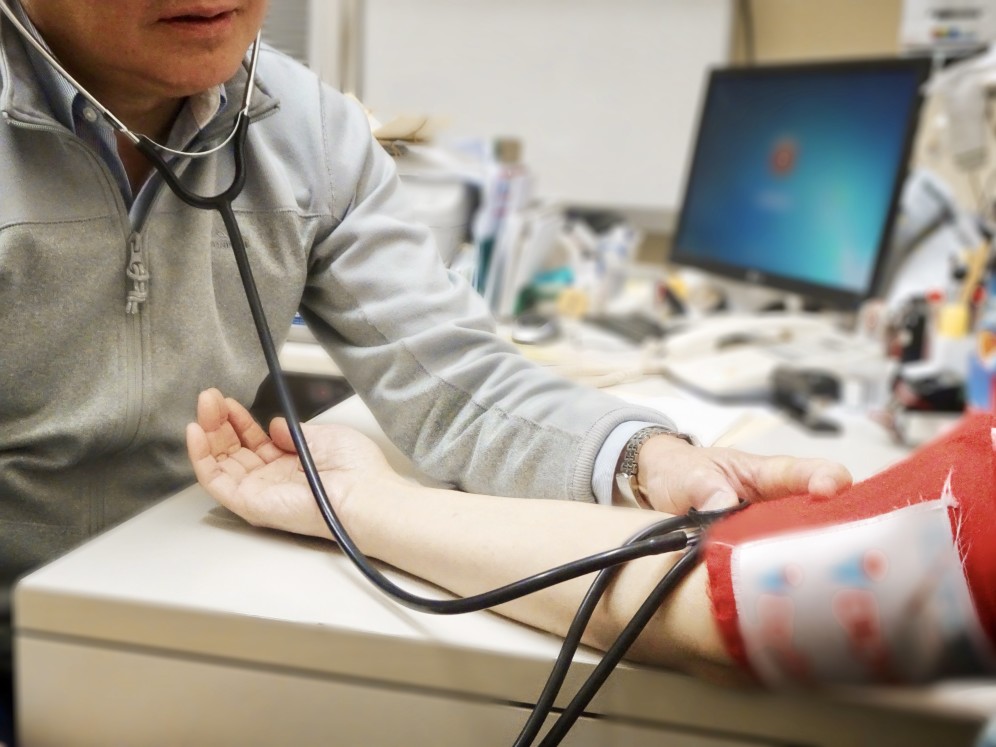Diabetes is a disease in which the body does not produce or properly use insulin. Insulin is a hormone needed to convert sugar, starches, and other food into energy needed for daily life.
Glucose—a sugar—is a main source of energy for the cells that make up muscles and other tissues throughout our bodies. Insulin is vital for breaking down glucose within our bloodstream to allow tissue to absorb it as energy. This process of breaking down sugars into absorbable chemicals is how we fuel our bodies.
Additionally, this process requires our bodies to be incredibly efficient at regulating the level of glucose in our bloodstream. When glucose levels are low, such as when you haven’t eaten in a while, the liver breaks down stored glycogen (excess glucose kept in the liver) into glucose. This keeps our bodies regularly fueled and operating at peak efficiency. It also, critically, keeps glucose levels within a typical range.
For patients with diabetes, however, there’s either no insulin to let glucose into the cells, or an insufficient amount of insulin to accomplish systemic stability. Because of this, sugar builds up in the bloodstream. This can cause life-threatening complications and is ultimately what makes diabetes so dangerous. But the difference in what causes
Primary Types of Diabetes
But not all diabetes works exactly the same. In fact, many patients already know this. We are frequently asked, “what are the types of diabetes?”

Well, there are 4 commonly recognized varieties of diabetes. The two most significant types include:
Type 1
Type 1 diabetes is an autoimmune disorder in which the body’s immune system destroys insulin-producing beta cells. As a result, the body cannot produce insulin, the hormone that allows glucose to enter and fuel the cells. To survive, individuals with type 1 diabetes must take insulin every day. It is estimated that 5-10% of Americans diagnosed with diabetes have type 1 diabetes.
Type 2
Type 2 diabetes is the most common type of diabetes, accounting for 90-95% of all diabetes. In type 2 diabetes, the body does not produce enough insulin and/or the body’s cells become resistant to insulin. This results in a condition called insulin resistance.
Causes
The exact cause of type 1 diabetes is currently not understood by science. Our best understanding is that the body’s own immune system—which normally fights harmful bacteria and viruses—misidentifies and then targets the insulin-producing cells in the pancreas, destroying them. There is also, however, some belief amongst doctors that there may be a hereditary link to the spread of the condition, and uncertainty surrounding the condition as a response to virus and/or environmental exposure early in life.
Though the uncertainty of what causes type 1 diabetes can prove incredibly frustrating to patients, the fact it usually appears so early in life makes it easier to monitor. With proper treatment, many type 1 diabetics live incredibly normal, comfortable lives.
Type 2 diabetes is associated with older age, obesity, physical inactivity, a family history of diabetes, a history of gestational diabetes, and race and ethnicity. Specifically, studies show that as a result of a variety of genetic and social factors, racial and ethnic minorities have a far higher prevalence of type 2 diabetes.
The Other Types of Diabetes
We previously stated there were 4 different types. Type 1 and type 2 are the most commonly recognized, but there are two other types:
Gestational
Gestational diabetes occurs in some women who have extremely elevated blood glucose levels during pregnancy but have never had diabetes. Between 4-8% of pregnant women experience gestational diabetes, but it isn’t always clear what causes the condition. It is believed that hormones released into the body to help with pregnancy and keeping a gestating fetus healthy can sometimes block the action of the mother’s insulin in her body.
This insulin resistance makes it hard for the mother’s body to use insulin. And this means that she may need up to three times as much insulin to compensate.
Gestational diabetes can also start when the mother’s body is not able to make and use all the insulin it needs for pregnancy. Without enough insulin, glucose can’t leave the blood and be changed into energy. When glucose builds up in the blood, it’s called hyperglycemia.
Prediabetes
Prediabetes is a condition that occurs when a person’s blood glucose levels are higher than normal but not high enough for a diagnosis of type 2 diabetes. It is estimated that there are approximately 41 million Americans who have prediabetes, in addition to the 20.8 million Americans currently living with diabetes.
Diabetic Arterial Disease Experts
Now that you have an answer to “what are the types of diabetes?” It’s time to take steps to keep yourself and your loved ones healthy.
If you require support treating diabetic arterial disease, come to the Ozark Regional Vein & Artery Center. Our experience and growing suite of care options enable us to guide you toward lasting wellness solutions for a happier, healthier life.
We are the premier practice in Northwest Arkansas for all the highest-quality vein treatments available. Patients come to Dr. Haney, Dr. Stout, and the expert staff from all over Northernwestern Arkansas, from Fayetteville to Bentonville, to ensure they receive the best concierge-level care and leg vein procedures.
Lead the charge on your vascular care with our Virtual Vein Screening Tool or by scheduling a consultation.

